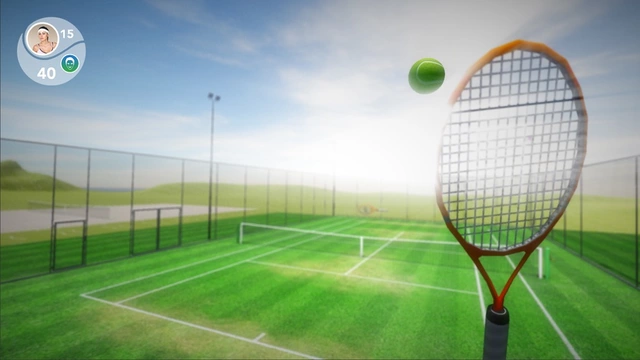How does a tennis elbow brace work?

Explaining the Science Behind a Tennis Elbow Brace and How It Works
Tennis elbow, also known as lateral epicondylitis, is a common condition caused by repetitive motions such as swinging a tennis racket. The condition is characterized by inflammation and pain in the elbow joint, which can be debilitating and greatly interfere with daily life.A tennis elbow brace is a tool used to help alleviate the symptoms of tennis elbow. It works by providing compression and support to the elbow joint, reducing the strain placed on the tendons and muscles. The brace also helps to limit the range of motion of the arm, allowing the elbow to heal more quickly.
The most common type of tennis elbow brace is an elastic bandage, which is wrapped around the elbow. This helps to reduce the pain associated with tennis elbow by compressing the muscles and tendons, which reduces the amount of strain placed on the elbow joint. Additionally, the bandage helps to keep the elbow joint in a position that allows for healing and protection.
Another type of tennis elbow brace is a splint. This type of brace is designed to provide more support and stability to the elbow joint, and can be used when the pain associated with tennis elbow is more severe. The splint works by keeping the elbow in a neutral position, allowing the muscles and tendons to rest and heal.
In addition to the brace itself, physical therapy is often recommended for those suffering from tennis elbow. Physical therapy can help to strengthen the muscles around the elbow joint, reducing the strain on the tendons and helping to reduce the pain associated with tennis elbow.
Tennis elbow braces are a safe and effective way to reduce the pain associated with tennis elbow and help the elbow joint heal. The type of brace used will depend on the severity of the condition, and physical therapy may also be necessary for full recovery.
The Benefits of Using a Tennis Elbow Brace to Relieve Pain and Improve Performance
Tennis elbow is a common condition caused by overuse of the elbow joint and can cause pain, inflammation, and decreased performance in sports. Tennis elbow braces are designed to relieve pain and reduce inflammation. They are designed to provide support to the elbow joint, allowing it to heal and recover from the overuse. The braces also provide stability to the joint, allowing the muscles and tendons to move more freely without putting additional strain on the joint.Using a tennis elbow brace can provide several benefits, such as reduced pain and inflammation, improved performance, and enhanced overall elbow joint health. The brace helps to reduce the pressure on the elbow joint by providing support and stability, allowing the muscles and tendons to move more freely. This can help to reduce the risk of further injury and pain.
A tennis elbow brace can also help to improve performance. By providing extra support and stability to the elbow joint, the brace can help to reduce fatigue and increase the range of motion of the elbow joint. This can help to improve flexibility and agility, allowing athletes to play at their full potential without risking further injury.
Finally, using a tennis elbow brace can help to improve overall elbow joint health. The brace can help to reduce inflammation and provide compression to the joint, which can help to reduce pain and improve joint mobility. This can help to prevent further injury or pain, allowing athletes to stay active and healthy.
In conclusion, using a tennis elbow brace can provide several benefits, such as reduced pain and inflammation, improved performance, and enhanced overall joint health. If you are suffering from pain or discomfort in your elbow joint, consider trying a tennis elbow brace to help relieve your symptoms and improve your performance.
Common Misconceptions About Tennis Elbow Braces and How to Avoid Them
When it comes to treating tennis elbow, many people turn to a tennis elbow brace as an easy solution. While a brace can certainly help, there are a few common misconceptions about how they work that can lead to an ineffective treatment.First, many people believe that all braces are the same and that any brace will do. However, this is not true. Different braces are designed to treat different areas of the arm, so it’s important to choose a brace that’s designed to support the specific area you’re experiencing pain in. Additionally, some braces are designed to provide more support than others. Make sure to read the product descriptions carefully to determine which brace is right for you.
Another misconception is that a brace will provide an instant cure. While a brace can help alleviate the pain, it’s not a one-size-fits-all solution. It’s important to combine the brace with other treatments, such as stretching and strengthening exercises. Additionally, you’ll need to give your injury time to heal and be patient with the process.
Finally, some people believe that a brace should be worn all the time. This is not true. A brace should only be worn for short periods of time, such as during intense activities or when you’re experiencing pain. Wearing a brace for too long can actually make your condition worse by weakening the muscles around the affected area.
By understanding how a tennis elbow brace works and avoiding these common misconceptions, you can maximize its effectiveness and get the relief you’re looking for.
Tennis Elbow Brace Types: Which One is Right for You?
If you’re dealing with tennis elbow pain, you may have been told to use a tennis elbow brace to help manage your symptoms. But with so many types of tennis elbow braces on the market, how do you know which one is right for you?The two main types of tennis elbow braces are counterforce braces and compression sleeves. Counterforce braces are designed to provide support and reduce strain on the muscles and tendons in the elbow by absorbing the force of the contraction. These braces typically feature a rigid strap that wraps around the forearm and a padded support that sits just below the elbow.
Compression sleeves, on the other hand, are designed to provide compression, warmth, and support to the affected area. These sleeves are typically made from neoprene or elastic material and are designed to fit snugly around the forearm and elbow to provide stability and reduce pain.
The type of tennis elbow brace that’s right for you will depend on the severity of your injury and the type of activities you’re engaging in. If you’re engaging in activities that require repetitive motions, such as tennis, it may be beneficial to use a counterforce brace to reduce the strain on your muscles and tendons. If you’re engaging in activities that don’t require repetitive motions, such as yoga or golf, a compression sleeve may be a better option.
Before you purchase a tennis elbow brace, it’s important to consult with your doctor or a physical therapist to determine which type of brace is most appropriate for your injury. They can also provide you with tips on proper use and wear and tear of the brace.
How to Properly Use a Tennis Elbow Brace for Maximum Effectiveness
Using a tennis elbow brace is a great way to reduce pain and discomfort from tennis elbow. But in order for the brace to be effective, it must be used correctly. Here are some tips for proper use of a tennis elbow brace:1. Wear the brace for an hour or two each day, or as recommended by your doctor.
2. Make sure the brace is fitted correctly and not too tight or too loose.
3. When wearing the brace, be sure to keep your arm in a relaxed position.
4. Make sure the brace is not blocking your circulation or range of motion.
5. Wear the brace during physical activity to help provide additional support and stability.
6. Make sure to take breaks from wearing the brace throughout the day to allow your arm to rest.
7. Clean the brace as recommended by the manufacturer to keep it in good condition.
By following these tips, you can make sure you are getting the most out of your tennis elbow brace. Wearing a tennis elbow brace can help to reduce pain, improve mobility, and provide additional support and stability. However, it is important to make sure the brace is used correctly in order to get the most out of it.




